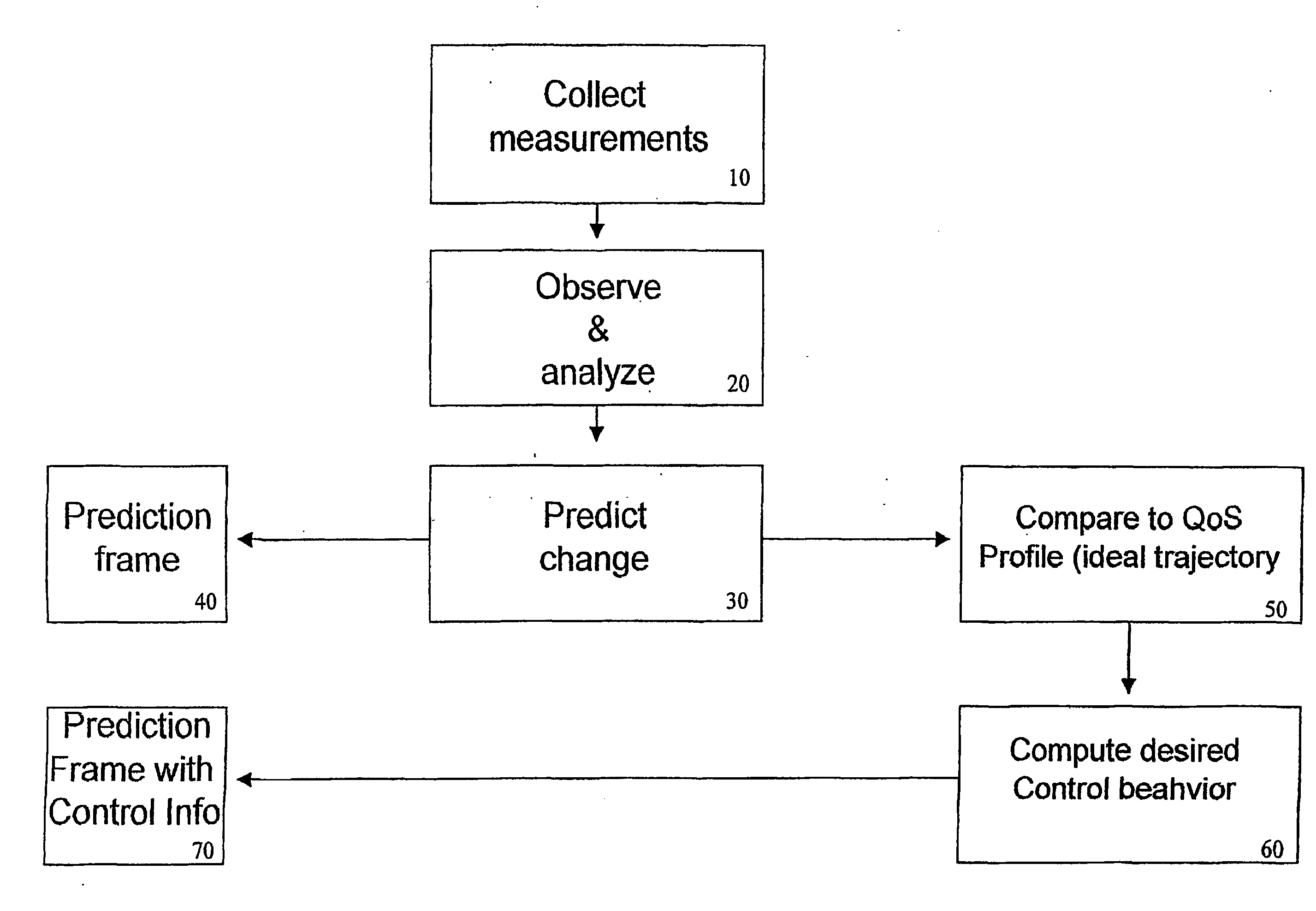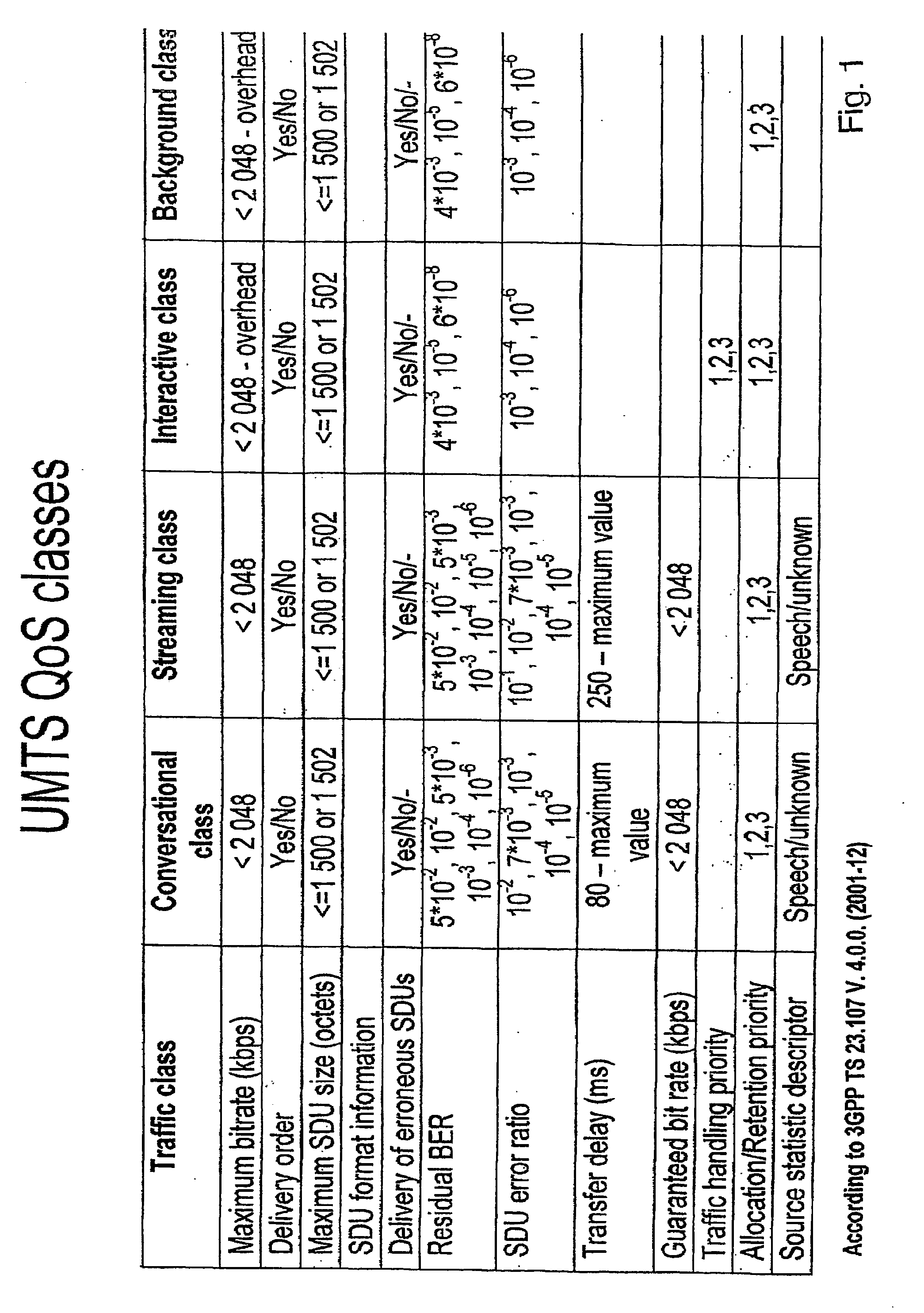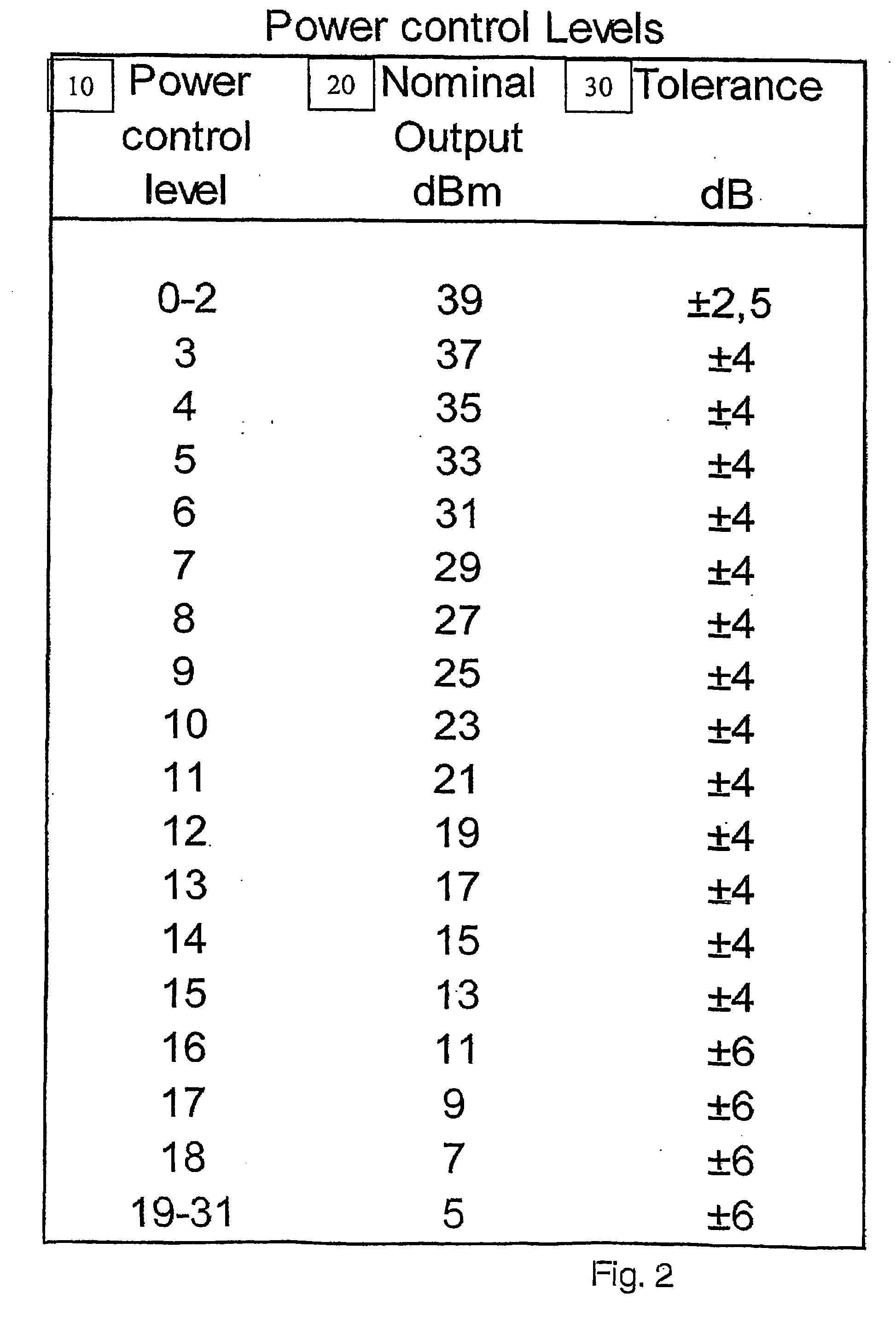Quality of service state predictor for and advanced mobile devices
a mobile device and service state technology, applied in the field of prediction of changes, can solve problems such as large transmission delay and inability to estimate control values
- Summary
- Abstract
- Description
- Claims
- Application Information
AI Technical Summary
Benefits of technology
Problems solved by technology
Method used
Image
Examples
an example
[0106] Assuming that the described method uses the following information:
[0107] RSSI, SIR, BER, Rx-Tx delay
[0108] After an observation period covering ideally at least 80 samples, and applying these values to the described methods, a RSSI.sub.t+1 and transmit power gain (power control) PC.sub.t+1 can be determined. These and other predictions are provided to external applications using an output frame or structure. In case of an application using the AMR WB codec, the PC.sub.t+1 value would be used to determine the point in time for intervention. At such time, the external QoS Management application may decide to replace the current RSSI value contained within the current AMR frame with the predicted RSSI.sub.t+1 supplied by the current invention. The codec bit rate would be adapted to a link state just about to occur. Of course, this would only apply to the receive side of the codec signaling a mode change to the encoding peer. However, applied correctly, the pre-emptive mode chang...
PUM
 Login to View More
Login to View More Abstract
Description
Claims
Application Information
 Login to View More
Login to View More - R&D
- Intellectual Property
- Life Sciences
- Materials
- Tech Scout
- Unparalleled Data Quality
- Higher Quality Content
- 60% Fewer Hallucinations
Browse by: Latest US Patents, China's latest patents, Technical Efficacy Thesaurus, Application Domain, Technology Topic, Popular Technical Reports.
© 2025 PatSnap. All rights reserved.Legal|Privacy policy|Modern Slavery Act Transparency Statement|Sitemap|About US| Contact US: help@patsnap.com



